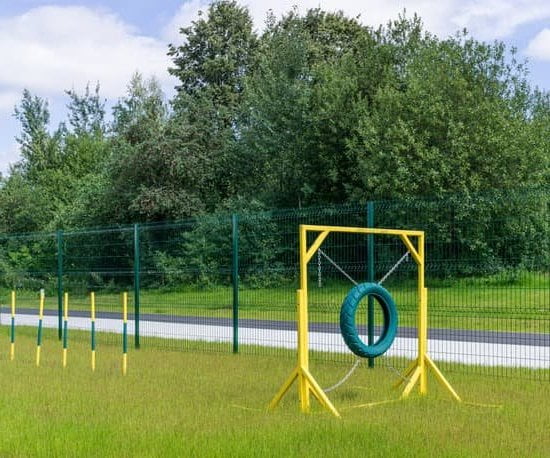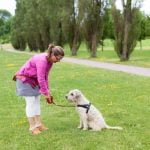Guide dogs play a crucial role in the lives of visually impaired individuals, assisting them in navigating their environments and ensuring their safety. These highly-trained canines undergo a rigorous training process to prepare them for their roles as guides.
The partnership between blind individuals and their guide dogs is built on trust, communication, and mutual dependence. In this article, we will explore the training process for guide dogs, delve into the challenges and benefits faced by blind individuals with their guide dogs, discuss common misconceptions surrounding guide dog training, and examine the emotional bond between blind individuals and their faithful companions.
For visually impaired individuals, guide dogs are more than just helpful companions-they are vital lifelines providing independence and freedom. Guide dogs have been specially bred and trained to assist those with vision loss in navigating busy streets, avoiding obstacles, finding doors or stairs, locating seats on public transportation, and many other essential tasks. Without these loyal companions by their side, blind people may face significant difficulties accessing everyday activities outside their homes.
The training journey for a guide dog is an intense process that typically takes several months to complete. During this time, potential guide dogs undergo extensive obedience training to master basic commands such as sit, stay, heel, and come.
They also receive specialized instruction in areas like obstacle avoidance techniques and intelligent disobedience-the ability to defy commands that could put their handler’s safety at risk. This comprehensive training equips them with the necessary skills to confidently navigate different environments alongside their visually impaired partners.
Stay tuned as we dive deeper into the wonderful partnership between blind individuals and their guide dogs. We will highlight a typical day in the life of someone who relies on these service animals while exploring the numerous benefits of guide dog training for both parties involved.
Additionally, we will address common misconceptions regarding guide dog training and shed light on some of the unique challenges faced by blind individuals during this process. Finally, we will delve into the certification and regulations surrounding guide dog training, as well as the profound emotional connection that develops between blind individuals and their guide dogs.
The Training Process for Guide Dogs
The training process for guide dogs is a precise and intensive program that prepares these loyal companions to assist the blind in navigating their surroundings. It involves various stages, from selecting the right puppies to ensure they possess the necessary traits, to providing comprehensive training in obedience, socialization, and guiding skills. This section will outline the different steps involved in the training process for guide dogs.
- Puppy Selection: Guide dog organizations carefully select puppies with specific qualities that are essential for success as a guide dog. These traits include intelligence, confidence, temperament, and physical attributes such as size and health. The selected puppies are typically Labrador Retrievers, Golden Retrievers, or German Shepherds due to their favorable characteristics.
- Early Socialization: During their first year of life, guide dog puppies undergo extensive socialization to expose them to different environments, sounds, objects, and people. This critical period helps them develop the necessary confidence and adaptability to become reliable guides.
- Basic Obedience Training: Once the puppies reach about one year old, they begin basic obedience training. They learn commands such as sit, stay, come, and heel through positive reinforcement techniques like treats and praise.
- Advanced Training: After mastering basic obedience commands, the dogs move on to advanced training focused on specialized tasks required for guiding individuals with visual impairments. This includes learning how to navigate obstacles like stairs, curbs, and crowded areas; understanding specific voice commands; practicing safe road crossings; and maintaining focus amidst distractions.
- Matching and Partner Training: Once trained, guide dogs are thoughtfully matched with blind individuals based on specific needs such as lifestyle and mobility requirements. The visually impaired individuals then undergo comprehensive partner training programs that teach them how to effectively communicate with their new guide dog and properly handle them in everyday situations.
The training process for guide dogs is meticulous and aims to produce capable companions that positively transform the lives of blind individuals by enhancing their mobility and independence. It requires significant time, effort, and expertise from both trainers and the visually impaired individuals who eagerly await the arrival of their new four-legged partners.
Partnership between Blind Individuals and their Guide Dogs
The Bond between Blind Individuals and their Guide Dogs
The partnership between blind individuals and their guide dogs is unlike any other. It goes beyond the typical owner-pet relationship and is built on trust, dependency, and mutual understanding. Guide dogs are highly trained to provide assistance and support to their visually impaired handlers, allowing them to navigate the world with greater confidence and independence.
Blind individuals rely on their guide dogs for a multitude of tasks such as guiding them safely through traffic, avoiding obstacles in their path, locating crucial landmarks or objects, and even alerting them to potential dangers. This deep bond between blind individuals and their guide dogs is cultivated through intensive training where both the human and canine receive instruction.
The Training Process for Blind Individuals with Their Guide Dogs
Guide dog training typically begins when the blind individual attends a specialized guide dog school. These schools have experienced trainers who work with both the person and the prospective guide dog to ensure compatibility. During the training period, the blind individual learns specific commands to give their dog while also learning how to read cues from their canine companion.
As part of this training process, the blind individual will practice various scenarios that they may encounter in everyday life such as crossing busy intersections or navigating crowded areas. The goal is for the pair to establish effective communication so that they can work together as a team seamlessly.
Working Together as a Team
Once the training is complete, blind individuals begin working with their guide dogs in real-life situations. They rely on their four-legged partners not only for physical guidance but also for emotional support. The partnership between a blind individual and their guide dog extends beyond simply helping with mobility; these animals become trusted friends who provide companionship throughout every aspect of life.
In this partnership, trust is paramount. The blind individual must have complete faith in their guide dog’s ability to keep them safe while the dog must have confidence in their handler’s ability to give clear instructions and make sound decisions. The blind individual and their guide dog together form a team that enhances each other’s abilities and opens up a world of possibilities.
Overall, the partnership between blind individuals and their guide dogs is one of profound trust, dependence, and companionship. Through extensive training and working together as a team, these individuals are able to overcome challenges, gain independence, and live fuller lives. The bond formed between a blind person and their guide dog is one of the most beautiful examples of the human-animal connection.
A Day in the Life
Morning Routine
For blind individuals, a typical day with their guide dog begins with a morning routine that involves grooming and feeding their furry companion. This routine is essential for maintaining the health and well-being of the guide dog.
Regular grooming not only ensures that the dog looks its best but also helps to keep them clean and free from any discomfort or health issues. It is important to establish a consistent feeding schedule to provide the necessary nutrition for both the guide dog and its owner.
Orientation and Mobility Training
After tending to the basic needs of their guide dogs, blind individuals engage in orientation and mobility training. This training focuses on teaching blind individuals crucial skills for navigation and spatial awareness with the assistance of their guide dogs. They learn how to communicate effectively with their dogs through different commands such as halt, forward, left, right, and curb recognition.
In addition to these fundamental commands, they also learn how to handle various obstacles encountered while walking, such as steps, curbs, crowded areas, and even traffic crossings. These training sessions are conducted in both controlled environments like training centers as well as real-world settings to ensure that blind individuals gain confidence in handling different situations they may encounter during their daily lives.
The Workday
Blind individuals who utilize guide dogs often lead active lives where they have jobs or responsibilities outside of their homes. During work hours or outings, their canine companions remain by their side, assisting them throughout the day. The guide dogs are trained not only to navigate various terrains but also to help locate specific places within a building or office space.
Guide dogs are adept at memorizing routes frequently taken by their owners and can adapt quickly if changes or detours occur. They ensure safe navigation by guiding blind individuals around obstacles while maintaining a steady walking pace. In more demanding situations like public transportation or busy airports, blind individuals rely on their guide dogs to avoid potential hazards and navigate through crowds.
A day in the life of a blind person with their guide dog is filled with trust, teamwork, and companionship. These highly trained animals assist their owners throughout the entire day, enabling greater independence and improved quality of life for blind individuals.
The Benefits of Guide Dog Training for Blind Individuals
Guide dog training provides numerous benefits for blind individuals, enhancing their independence, mobility, and overall quality of life. These highly trained dogs play a crucial role in helping their handlers navigate their surroundings by avoiding obstacles and leading them safely from one place to another. This section will explore some of the key benefits that guide dog training offers to blind individuals.
Firstly, guide dogs provide a newfound sense of freedom and independence for blind individuals. With the assistance of their guide dogs, these individuals are able to travel more confidently and efficiently, whether it be walking on sidewalks, crossing streets, or navigating through crowded areas. Guide dogs allow blind individuals to explore new environments without constantly relying on others for help, giving them the freedom to pursue various activities and participate more fully in society.
Furthermore, guide dogs improve the safety and security of blind individuals. These specially trained companions are well-versed in obstacle avoidance techniques and are consistently alert to potential dangers in their surroundings. They help prevent accidents by guiding their handlers around obstacles such as low-hanging branches or uneven pavement surfaces. Additionally, guide dogs act as a visible indicator to others that their handler is visually impaired, which often encourages bystanders to offer assistance when needed.
Lastly, guide dogs provide invaluable emotional support and companionship to blind individuals. The bond formed between a blind individual and their guide dog goes beyond navigation tasks; it is based on trust, loyalty, and unconditional love. Being accompanied by a devoted canine partner can alleviate feelings of isolation and loneliness often experienced by those who are visually impaired. The presence of a guide dog can also serve as a conversation starter and icebreaker when interacting with others in public settings.
| Benefit | Statistics |
|---|---|
| Improved Independence | Guide dog users report feeling more independent and having an increased overall sense of freedom. |
| Enhanced Safety | Blind individuals with guide dogs experience fewer accidents and falls compared to those without a guide dog. |
| Emotional Support and Companionship | A study showed that blind individuals who had guide dogs reported lower levels of loneliness and depression. |
Common Misconceptions about Guide Dog Training
Guide dog training is a vital and rigorous process that provides blind individuals with greater independence and mobility. However, there are several misconceptions surrounding the training of guide dogs that need to be addressed.
One common misconception is that blind individuals train their guide dogs on their own. In reality, guide dogs are trained by professionals who specialize in this field. These professionals have extensive experience and knowledge of working with dogs to meet the specific needs of blind individuals.
The training process involves teaching the dog various commands and skills, such as guiding their handler around obstacles, stopping at curbs, and navigating street crossings safely. Additionally, these professionals also teach blind individuals how to effectively communicate and work with their guide dogs through hands-on training sessions.
Another misconception about guide dog training is that it is a short-term process. On the contrary, guide dogs undergo intensive training for a minimum period of 6 to 12 months before they are matched with a blind individual. This ensures that the dog has developed the necessary skills and behaviors to assist their handler effectively.
Even after the initial training period, ongoing training is crucial to maintain and reinforce the dog’s skills. Furthermore, blind individuals themselves play an active role in continuously reinforcing these skills through regular practice and guidance from professionals.
Additionally, some people mistakenly believe that anyone can become a trainer for guide dogs or that any breed of dog can serve as a guide dog. In reality, only highly skilled and experienced trainers are qualified to train guide dogs due to the complexity of the tasks involved.
Moreover, not all breeds are suitable for guide dog work. Breeds such as Labrador Retrievers, Golden Retrievers, German Shepherds, and Standard Poodles are commonly selected for their intelligence, temperament, size, physical stability, and ability to learn complex tasks.
Addressing these common misconceptions surrounding guide dog training is essential to promote awareness and understanding among the general public. By debunking these myths, we can foster a more accurate and informed perspective on the training process, ultimately acknowledging the tremendous impact guide dogs have on the lives of blind individuals.
Challenges Faced by Blind Individuals and their Guide Dogs in Training
Guide dog training is an intensive process that requires not only dedication from the guide dog trainers, but also perseverance from the blind individuals who will ultimately rely on these dogs. However, there are several challenges faced by both blind individuals and their guide dogs during the training process.
One of the main challenges is building trust and establishing effective communication between the blind person and their guide dog. Trust is crucial as it allows the blind individual to confidently follow the cues given by their guide dog, knowing that they can rely on them to navigate safely. This trust is built through consistent training and practice sessions that help them develop a strong bond.
Another challenge is navigating unfamiliar environments. Guide dogs are trained to navigate various obstacles such as stairs, curbs, and crowded areas. However, every environment presents unique challenges, and it takes time for both the blind individual and their guide dog to become familiar with new surroundings. Additionally, unpredictable situations such as construction sites or crowded events may require additional training or adjustments to ensure safety.
Furthermore, distractions can present a challenge during the training process. Guide dogs undergo extensive training to remain focused on their tasks even when faced with distractions like other animals or loud noises. For blind individuals, staying focused and providing clear commands despite external stimuli can also be challenging. Both parties need to work together to minimize distractions and maintain concentration during training sessions.
Challenges Faced by Blind Individuals and Their Guide Dogs in Training
| Challenge | Description |
|---|---|
| Building Trust | The challenge of establishing trust between blind individual and guide dog |
| Navigating Unfamiliar Environments | The challenge of adapting to new surroundings and effectively navigating unfamiliar environments |
| Dealing with Distractions | The challenge of maintaining focus and minimizing distractions during training sessions |
Despite these challenges, the partnership between blind individuals and their guide dogs is incredibly rewarding. Through patience and perseverance, they are able to overcome obstacles together and achieve a high level of independence. The bond that is formed during the training process helps both the blind individual and their guide dog navigate not only physical challenges, but also emotional ones. With dedication and support, blind individuals can successfully train with their guide dogs to enhance their quality of life.
Certification and Regulations for Guide Dog Training
Guide dog training involves a rigorous process to ensure the highest standards of training and behavior for both the guide dogs and their handlers. To ensure that blind individuals receive the best possible assistance from their guide dogs, there are various certification programs and regulations in place.
One important aspect of guide dog training is the certification process. Before a guide dog can be matched with a blind individual, it must undergo extensive training to ensure it possesses the necessary skills to effectively assist its handler. Certification programs assess various aspects of the dog’s abilities, such as obedience, navigation skills, and response to different commands. These programs often involve both written tests and practical assessments to evaluate the guide dog’s performance.
In addition to certifying the dogs, there are also regulations that govern guide dog training organizations. These regulations vary by country but typically include requirements related to staff qualifications, facilities, training methods, and ongoing monitoring of guide dog teams in order to maintain high standards of safety and effectiveness. These regulations aim to protect both the blind individuals who rely on guide dogs and ensure that they receive dogs that have undergone proper training.
- Certification programs assess various aspects of a guide dog’s abilities
- Requirements related to staff qualifications
- Facilities
- Training methods
- Ongoing monitoring of guide dog teams
Overall, certification and regulations play an essential role in ensuring that blind individuals receive well-trained guide dogs that can effectively support them in their daily lives. These measures provide assurance that both the dogs and organizations meet specific criteria in terms of training methodologies, standards of care, and ongoing support. By adhering to these guidelines, blind individuals can have confidence in their partnership with their trained guide dogs as they navigate through life together.
The Emotional Bond between Blind Individuals and their Guide Dogs
Blind individuals and their guide dogs often develop a remarkable emotional bond. This bond goes beyond mere reliance on the dog for mobility assistance. It is a deep connection of trust, companionship, and unconditional love that enhances the lives of both the blind individual and the dog.
Guide dogs are trained not only to navigate obstacles and provide directional cues but also to offer emotional support to their handlers. The constant presence of a well-trained guide dog can significantly reduce feelings of loneliness, anxiety, and depressive symptoms among blind individuals. The bond between these partners can be compared to that of any human-animal relationship but with added significance due to the unique role guide dogs play in the independence and safety of their handlers.
The emotional bond between a blind individual and their guide dog develops through many shared experiences during training as well as in daily life. During training exercises, blind individuals rely heavily on their guide dogs’ guidance, forming a strong sense of dependency on them. These experiences create mutual understanding and an unspoken language between them, as they learn to communicate effectively without relying solely on verbal commands.
Conclusion
In conclusion, guide dog training plays a crucial role in the lives of blind individuals. These dedicated animals are trained to provide assistance and improve mobility for their visually impaired partners. The partnership formed between a blind individual and their guide dog is a unique relationship that greatly enhances the quality of life for both parties involved.
Throughout this article, we have explored the various aspects related to guide dog training. We have discussed the importance of these dogs in enabling independence and navigation for those with visual impairments. We have also delved into the training process itself, highlighting the rigorous training programs that these intelligent animals undergo to ensure they can effectively serve as guides.
Furthermore, we have debunked common misconceptions surrounding guide dog training and highlighted some of the challenges faced by blind individuals and their guide dogs during their training journey. Additionally, we touched upon the certification and regulations governing guide dog training to emphasize the commitment to standards and ensuring proper care for both dogs and handlers.
However, one of the most significant aspects of guide dog training is the emotional bond formed between blind individuals and their canine partners. This unique connection creates trust, companionship, and an unwavering sense of teamwork. Guide dogs become much more than just a service animal; they become valued members of their human partner’s lives.
In summary, guide dog training has a transformative impact on the lives of blind individuals by providing them with increased independence, freedom, and confidence. These extraordinary animals offer not only physical assistance but also emotional support to their visually impaired partners.
As we continue to recognize their invaluable contributions, it is essential that society supports initiatives that promote proper care for guide dogs while also raising awareness about blindness-related issues. Through continued education and understanding, we can ensure that blind individuals receive all the support they need in navigating their world with grace alongside their faithful four-legged companions.
Frequently Asked Questions
How do they train guide dogs for the blind?
Guide dogs for the blind undergo a specialized and rigorous training process to ensure they can assist individuals with visual impairments effectively. The training typically starts when the dogs are still young puppies, between the ages of 8-12 weeks, where they are exposed to various socialization experiences and basic obedience commands. As they grow older, they receive further training in more advanced skills such as obstacle avoidance, intelligent disobedience (knowing when not to follow a command that may endanger their handler), and directional commands.
They are also taught how to navigate different environments, including crowded areas and public transportation. The trainers use positive reinforcement techniques like treats and praise to reinforce desired behaviors and gradually shape the dog’s abilities. This comprehensive training program helps guide dogs develop the necessary skills and confidence to assist individuals with visual impairments safely.
How long does it take to train a dog for the blind?
Training a dog for the blind is an extensive process that requires time, dedication, and patience from both the trainers and the dogs themselves. On average, it takes around 18-24 months to train a dog for guiding individuals who are blind or visually impaired. However, this timeline can vary depending on several factors such as the individual dog’s temperament, learning abilities, and specific needs of the person they will be assisting.
Some dogs may need additional time to fully master all the necessary skills while others may progress faster through training milestones. Throughout this period, guide dogs receive ongoing assessment and evaluation by professional trainers to ensure their suitability for becoming successful partners in enhancing their handler’s independence.
What dogs are trained for the blind?
Several different breeds can be trained as guide dogs for individuals who are blind or visually impaired since each individual has unique requirements that might affect what type of dog is best suited for them. Generally speaking, Labradors Retrievers, Golden Retrievers, and German Shepherds are commonly selected due to their intelligence, adaptability, size, temperament, and ease of grooming. These breeds possess characteristics beneficial for guide dog work, including being highly trainable, having a strong work ethic, and being naturally inclined to assist humans.
However, not all dogs from these breeds have the necessary qualities to become guide dogs. Additionally, other breeds like Standard Poodles and Labrador/Golden Retriever crosses (known as Labradoodles or Goldendoodles) are sometimes used for their hypoallergenic qualities. Ultimately, the selection of the breed depends on various factors such as the individual’s lifestyle, living environment, and specific needs in order to ensure a successful match between the guide dog and their handler.

Welcome to the blog! I am a professional dog trainer and have been working with dogs for many years. In this blog, I will be discussing various topics related to dog training, including tips, tricks, and advice. I hope you find this information helpful and informative. Thanks for reading!





